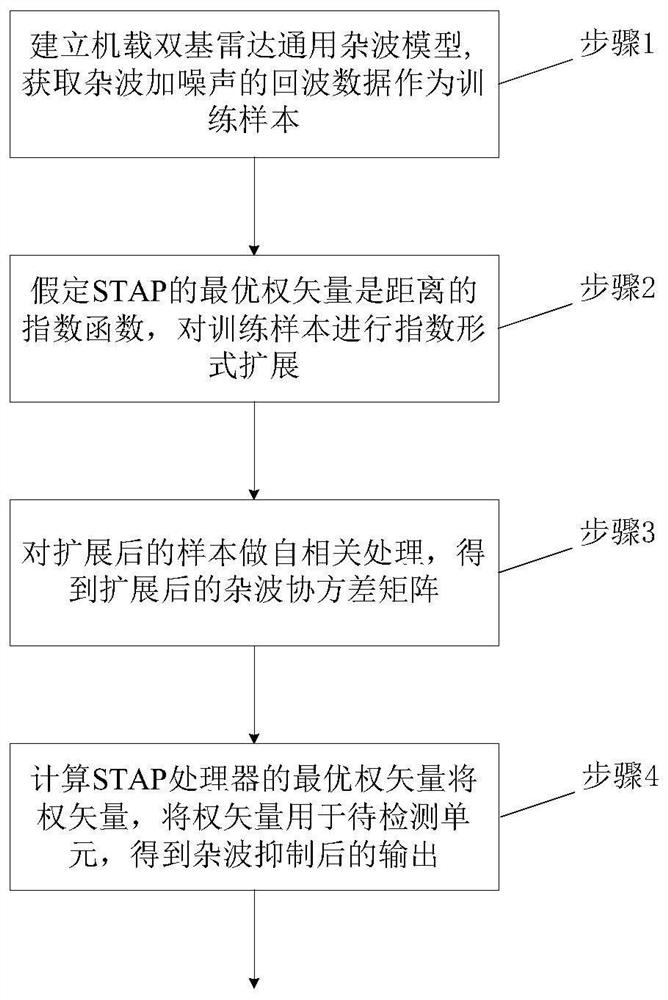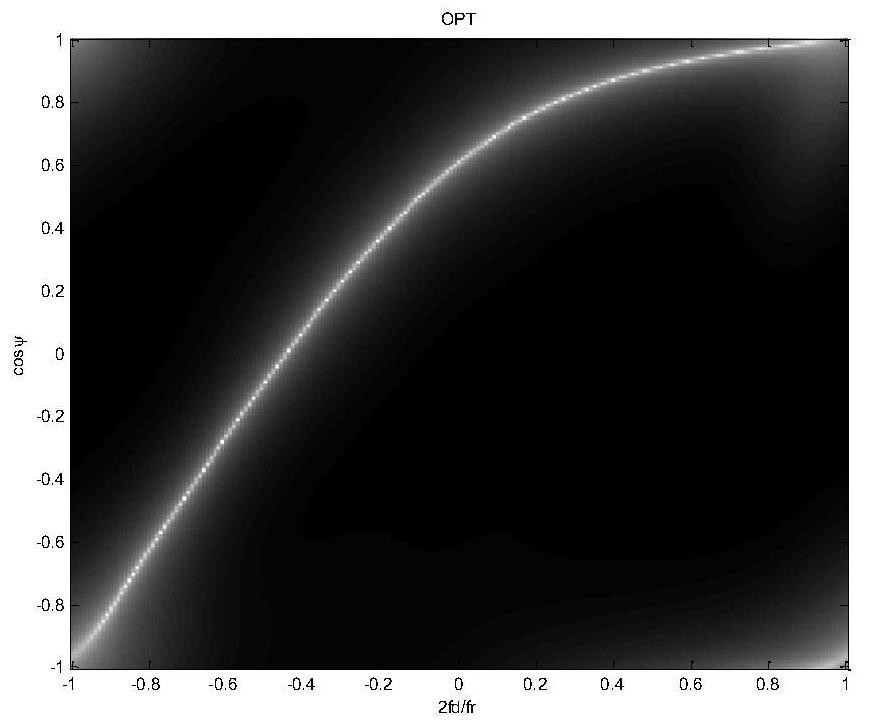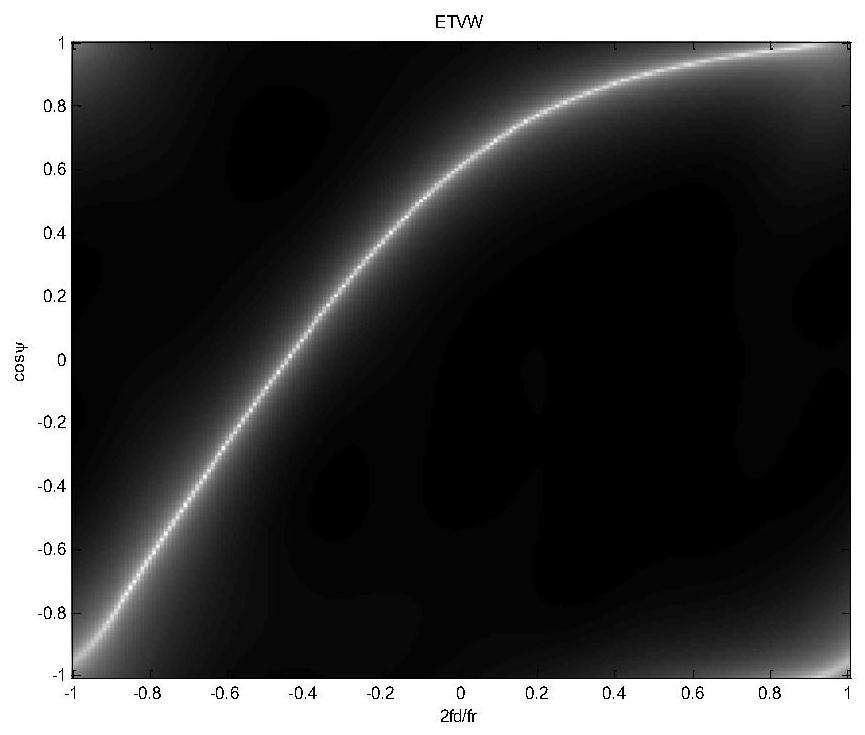Airborne bistatic radar STAP algorithm based on exponential form time-varying weighting
A dual-base radar, exponential technology, used in radio wave measurement systems, instruments, etc., can solve the problem of keeping the change speed unchanged, and achieve the effects of improving accuracy, improving clutter non-stationarity, and simple implementation.
- Summary
- Abstract
- Description
- Claims
- Application Information
AI Technical Summary
Problems solved by technology
Method used
Image
Examples
Embodiment 1
[0028] see figure 1 , the present invention is based on the exponential time-varying weighted airborne bistatic radar STAP algorithm, in order to solve the airborne bistatic radar clutter distance distribution non-stationary, space-time adaptive processing (STAP) technology clutter suppression performance decline problem, using The exponential function of the distance is introduced into the processor weight vector to accurately represent the nonlinear characteristics of the clutter change. By expanding the sample data in an exponential form, the compensation for the non-stationary distribution of the clutter is realized, and the accuracy of the estimation of the clutter covariance matrix is improved. To a certain extent, the clutter suppression performance of the STAP processor is improved.
[0029] Step 1. Establish a general clutter model of the airborne bistatic radar, and collect the echo signal X(l) of the airborne bistatic radar clutter plus noise as a training sample....
Embodiment 2
[0034] The airborne bistatic radar STAP algorithm based on exponential time-varying weighting of this embodiment is different from Embodiment 1 in that: further, in step 1, the airborne bistatic radar general clutter model is established, and the airborne bistatic radar is collected. The echo signal X(l) of bistatic radar clutter plus noise is used as a training sample, and the specific process is as follows:
[0035] Establish a space Cartesian coordinate system, the launch platform is located at T X and the height is H T , the receiving platform is located at R X And the flying height is H R , the baseline length is the distance L between the transceiver platforms s , the launch platform moves at velocity v T along the angle α with the baseline T moving in the direction of , the receiving platform moves at a velocity v R The angle with the baseline is α R direction of movement. The radar transmit pulse travels the distance RT Arrive at the scattering point P on the g...
Embodiment 3
[0053] The airborne bistatic radar STAP algorithm based on the time-varying weight of the exponential form of the present embodiment is different from the embodiment 2 in that: in step 2, it is assumed that the optimal weight vector of the airborne bistatic radar STAP is about the distance unit l Exponential function of Through matrix transformation, the expanded training samples are obtained where α is the attenuation coefficient, μ 1 and μ 2 is the normalization coefficient.
[0054] Specifically, it is assumed that the optimal weight vector of the bibasic STAP is related to the exponential function of the distance unit l, satisfying
[0055] W=W(e -αl ) (7)
[0056] According to Taylor formula, W(e -αl ) to expand and ignore its three or more items to get
[0057]
[0058] where the first and second derivatives of W(0) are denoted as and
[0059] STAP processor output of the lth unit
[0060]
[0061] In the formula and respectively represent the we...
PUM
 Login to View More
Login to View More Abstract
Description
Claims
Application Information
 Login to View More
Login to View More - R&D
- Intellectual Property
- Life Sciences
- Materials
- Tech Scout
- Unparalleled Data Quality
- Higher Quality Content
- 60% Fewer Hallucinations
Browse by: Latest US Patents, China's latest patents, Technical Efficacy Thesaurus, Application Domain, Technology Topic, Popular Technical Reports.
© 2025 PatSnap. All rights reserved.Legal|Privacy policy|Modern Slavery Act Transparency Statement|Sitemap|About US| Contact US: help@patsnap.com



